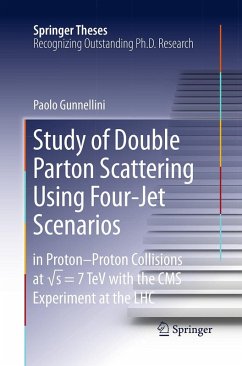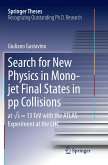This thesis addresses in a very new and elegant way several measurements and the extraction of so-called double parton scattering. The new and elegant way lies in the combination of measurements and a very smart extraction of double parton scattering results, which is easy to apply and overcomes many of the technical difficulties of older methods. Many new phenomena in particle physics can be observed when particles are collided at the highest energies; one of the highlights in recent years was the discovery of the Higgs boson at the Large Hadron Collider at CERN. Understanding the production mechanism of the Higgs boson at the LHC requires detailed knowledge of the physics of proton-proton collisions. When the density of partons in the protons becomes large, there is a non-negligible probability that more than one parton participates in the interaction and the so-called double parton scattering becomes important. In some cases very particular final state signatures can be observed, which can be regarded as an indication of such double partonic scattering and where the different interactions can be separated. Such multiple partonic interactions play an important role when precise predictions from known processes are required.








